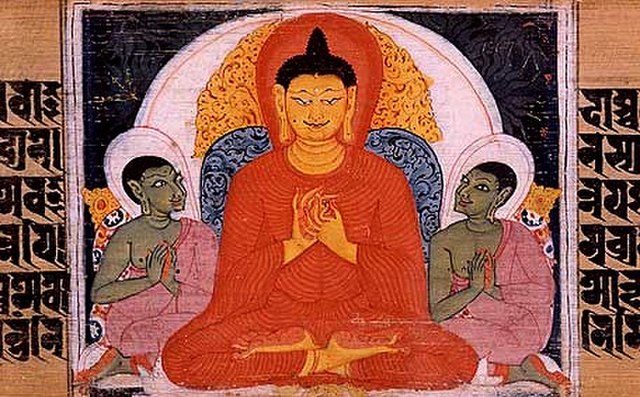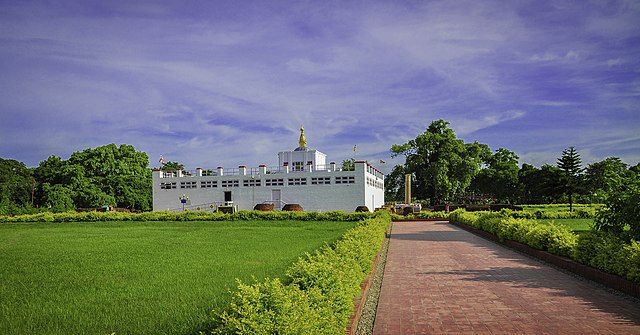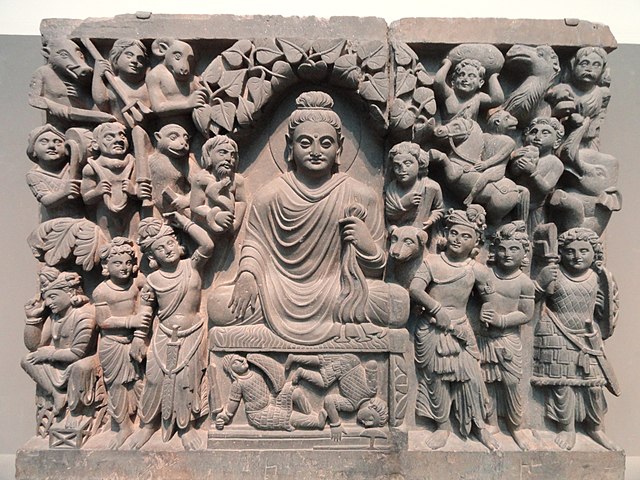In Buddhism, the Four Noble Truths are "the truths of the Noble Ones", the truths or realities for the "spiritually worthy ones". The truths are:dukkha is an innate characteristic of the perpetual cycle of grasping at things, ideas and habits;
samudaya : there is dukkha when there is, or it arises simultaneously with, taṇhā.
nirodha : dukkha can be ended or contained by the confinement or letting go of this taṇhā;
marga is the path leading to the confinement of tanha and dukkha.
The Buddha teaching the Four Noble Truths. Sanskrit manuscript. Nālandā, Bihar, India.
Tibetan Bhavacakra or "Wheel of Life"
A relief depicting the first discourse of the Buddha, from the 2nd century (Kushan). The Walters Art Museum. The Buddha's hand can be seen at right.
Buddhism, also known as Buddha Dharma and Dharmavinaya, is an Indian religion and philosophical tradition based on teachings attributed to the Buddha. It is the world's fourth-largest religion, with over 520 million followers, known as Buddhists, who comprise seven percent of the global population. Buddhism originated in the eastern Gangetic plain as a śramaṇa–movement in the 5th century BCE, and gradually spread throughout much of Asia via the Silk Road.
Mayadevi Temple marking the Buddha's birthplace in Lumbini
Enlightenment of Buddha, Kushan dynasty, late 2nd to early 3rd century CE, Gandhara
The Buddha teaching the Four Noble Truths. Sanskrit manuscript. Nalanda, Bihar, India
Traditional Tibetan Buddhist Thangka depicting the Wheel of Life with its six realms






